Are you looking for a way to shake things up as the school year winds down? Printmaking is the creative spark your classroom needs! While printmaking can sometimes be a long process, it doesn’t have to be. Throw a Printmaking Party for a pop-up print shop where students get a fast and deep dive into the world of printmaking. With just one day and these quick, hands-on ideas, you can inspire your students and keep the creative energy high up to the last day.
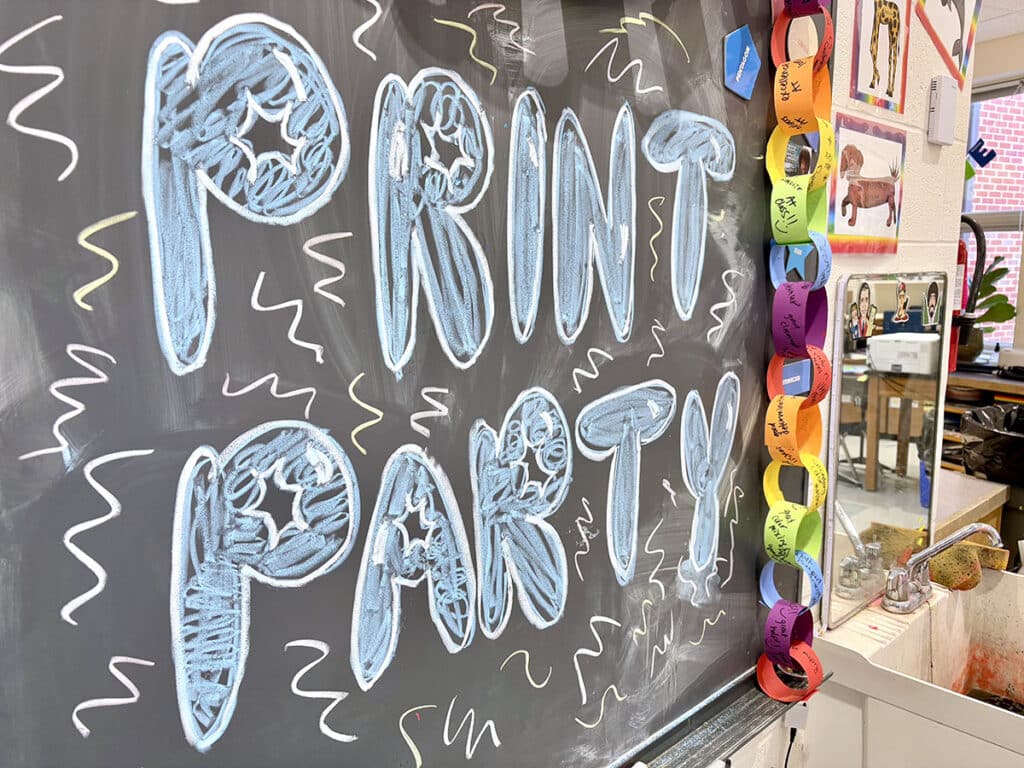
If you need a little background on printmaking before you dive into the party, break down the basics with the resources below:
Before we explore ideas, let’s look at five practical tips to make your next Printmaking Party a success!
One-day printmaking moves quickly and demands careful planning. Use the five pointers below to keep you and your students on track for a successful experience. When everything is running smoothly, it will free everyone up to have more fun!
1. Streamline instruction with anchor charts.
When you’re trying to produce art in one day, there’s no time to repeat instructions multiple times. Anchor charts are the perfect solution because they visually outline each stage in the printmaking process for students to reference when needed. Harness FLEX Curriculum for ready-made printmaking anchor charts like A Visual Guide to Printmaking and the Printmaking Skills series.
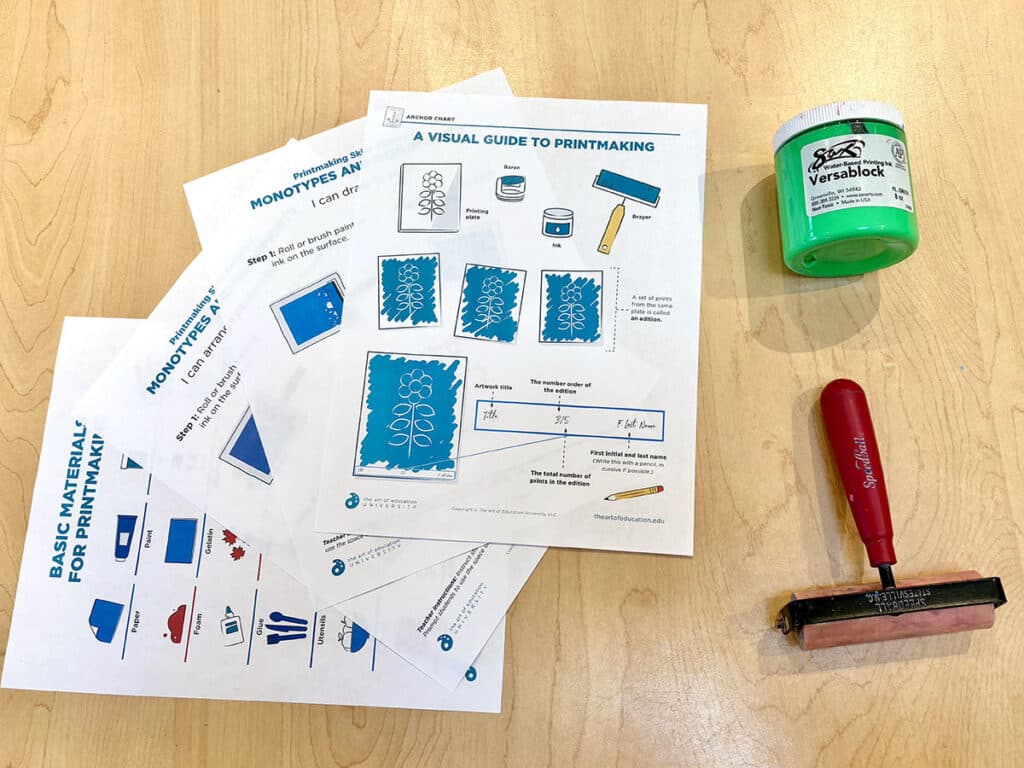
2. Pre-prep materials for efficiency.
The period will move fast, so don’t count on time to prep as you go. Have everything ready before class starts to maximize efficiency. Pre-portion ink or paint in little cups, set up stations, cover tables, pre-cut paper, and prep damp paper towels or wet wipes.
3. Stay on track with a visual timer.
Break the class period down into 5-10 minute increments for each stage in the printmaking process. Use a fun animated visual timer to keep everyone on track and maintain the energy of the classroom. Make sure you allot time for cleanup too!
4. Simplify cleanup with designated stations.
Like any good party, printmaking is messy! Stay ahead of the chaos by setting up well-organized cleanup stations. Fill buckets of soapy water for rinsing brayers and other printing supplies. Provide wet wipes for quick hand and table cleaning. Plus, encourage students to clean as they go to prevent messes from piling up. Walk around with small incentives, like fun stickers, to reinforce the cleanup behaviors you want to see more of!
5. Keep student work organized with larger papers.
Give each student a large piece of paper for their workspace. As students create their prints, place each one onto the larger sheet. This way, all of their work stays contained in one place. It’s easier to transport the entire sheet like a tray to the drying rack, and it eliminates fingerprints and lost pieces.

Are you ready to get your Printmaking Party started? Discover three one-day printmaking projects that will inspire your students!
1. Geometric Reliefs with Plastic Building Bricks
Bring the elegance of Greco-Roman patterns to your students using an unexpected toy—plastic building bricks! Start by showing images of Greco-Roman art and architecture, highlighting the geometric designs and patterns. Be sure to point out the repetition and symmetry in these patterns. Use the Greek Pattern resource in FLEX Curriculum to give your students a clear visual reference.
Next, students arrange plastic building bricks into geometric designs on a larger, flat base plate. Do a quick texture rubbing as a prototype before making the final print. When they’re ready to print, use acrylic paint mixed with a small amount of soap for a smooth application. Repeat the plate to create larger, cohesive patterns and surface designs!
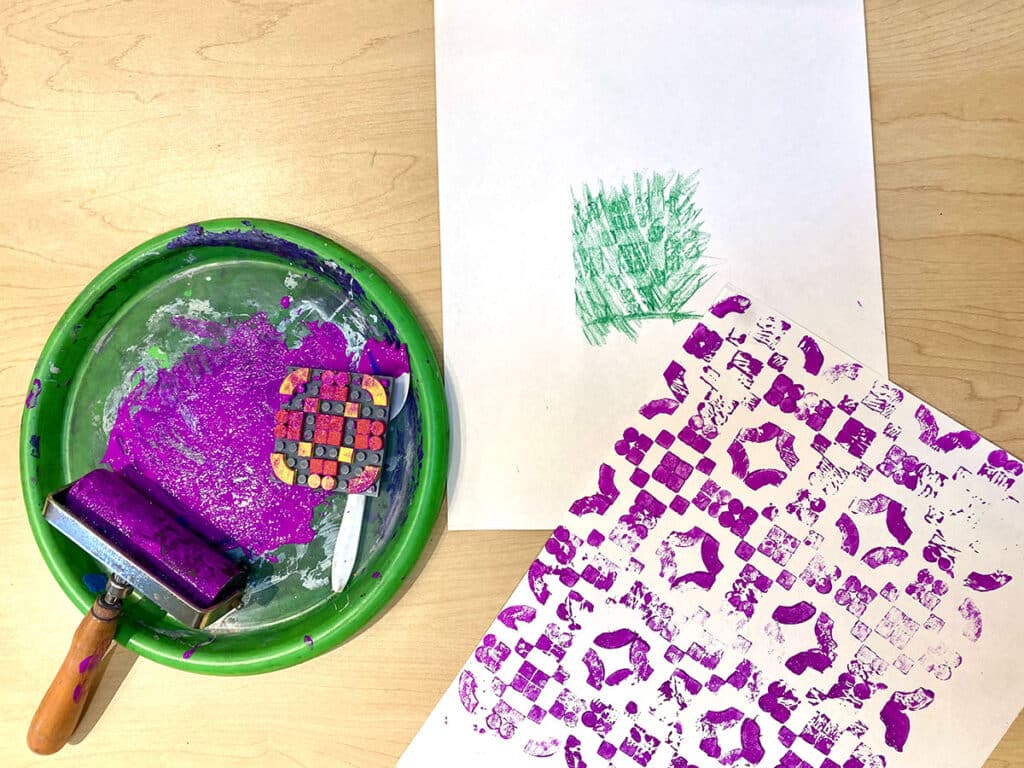
2. Tie-Dye Monoprints with Aluminum Foil
Bring the excitement of tie-dye to your art room with an easy and colorful monoprinting technique! Inspired by the vibrant colors of artist Jen Stark, this printmaking process uses aluminum foil and markers to create concentric circle patterns that mimic the look of tie-dye.
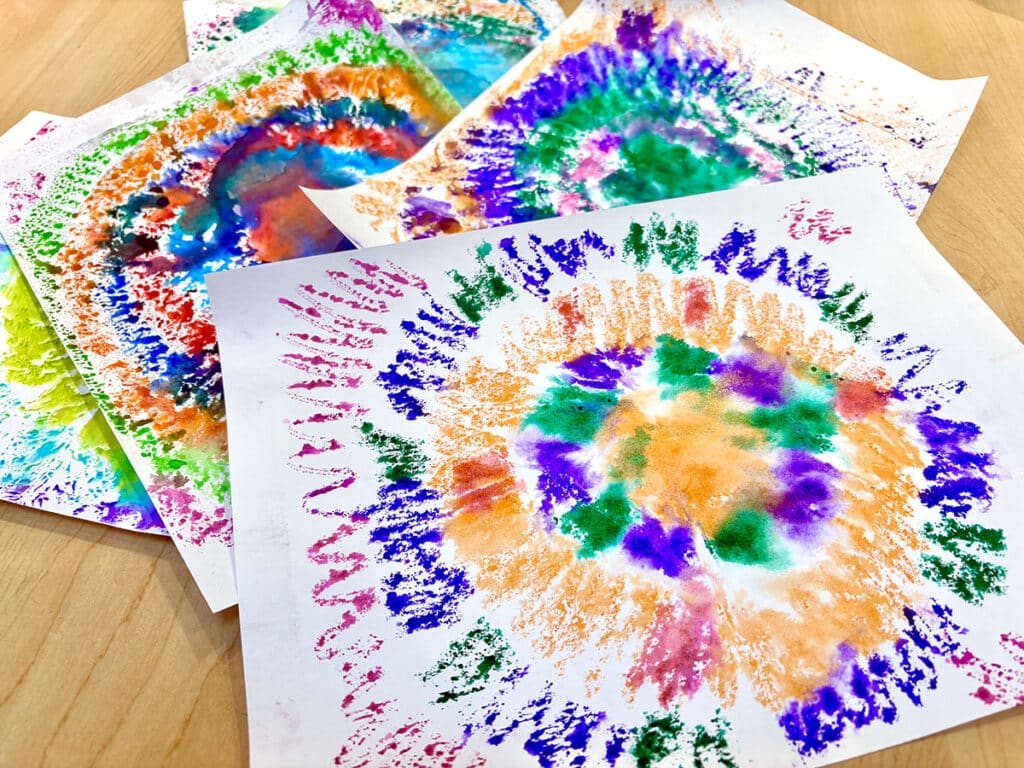
Start by cutting a piece of aluminum foil for the printing plate. Cut paper the same size as the foil plate. Use juicy markers to create a dot in the center, then work outward to form concentric circles. Once the design is complete, lightly spray the foil with water to reactivate the ink. Place the paper on top and rub the back of the paper to transfer the design.
Get your cameras ready, because the reveals are beyond fun! Students will “Oooh!” and “Ahhh!” as they lift the print and unveil their vibrant, tie-dye masterpieces. For a more detailed look at this process, watch the tutorial below.
https://www.youtube.com/watch?v=8r4H0HlcQpM
3. Layered Stamps with Found Objects
Get inspired by a master of pattern and repetition—Jasper Johns! Students will create multi-layered prints using found objects to form bold patterns. Introduce students to Three Flags and focus on the layers and patterns. Use the artist bio in FLEX Curriculum to frame their learning. Then, students will gather found objects like plastic forks, marker lids, and cardboard to stamp a border on a large sheet of paper. Repeat the process, with smaller and smaller papers each round. The result will be a multi-layered print that explores depth and repetition.
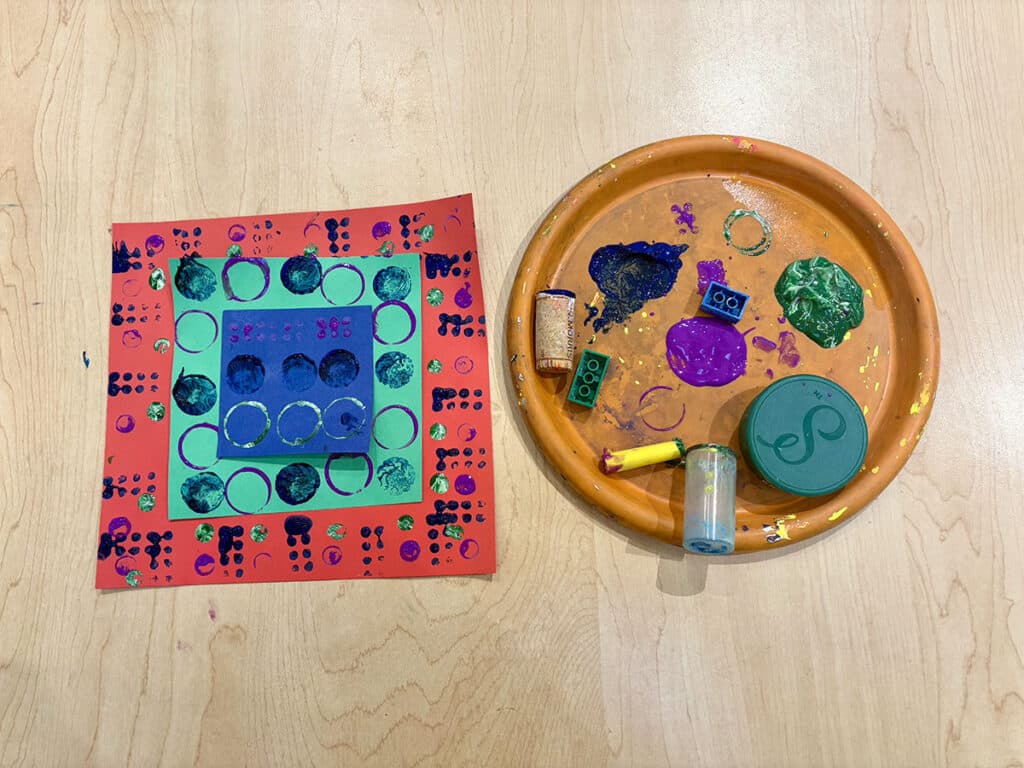
Turn printmaking from a traditional art form into a creative celebration for your students with a one-day Printmaking Party! Dive into hands-on learning and explore how to make multiples in just one class period. Take a few preparatory steps to ensure a smooth experience, and then, bring plastic building bricks, foil, or found objects to life with ink and a brayer. Let’s get this Printmaking Party started and end the year with the best party favors to bring home—awesome prints!
Which projects are you excited to add to your next Printmaking Party?
Share your best ideas and tips to make printmaking a celebration in your classroom!
To chat about one-day printmaking with other art teachers, join us in The Art of Ed Community!
Magazine articles and podcasts are opinions of professional education contributors and do not necessarily represent the position of the Art of Education University (AOEU) or its academic offerings. Contributors use terms in the way they are most often talked about in the scope of their educational experiences.

دیدگاهتان را بنویسید